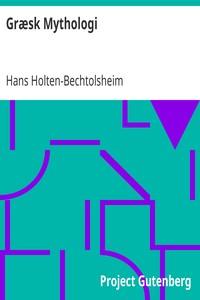Read this ebook for free! No credit card needed, absolutely nothing to pay.
Words: 51930 in 16 pages
This is an ebook sharing website. You can read the uploaded ebooks for free here. No credit cards needed, nothing to pay. If you want to own a digital copy of the ebook, or want to read offline with your favorite ebook-reader, then you can choose to buy and download the ebook.


: Domestic Animals History and description of the horse mule cattle sheep swine poultry and farm dogs; with directions for their management breeding crossing rearing feeding and preparation for a profitable market; also their diseases and remedies. Together
d and satisfactory improvement, and from such flocks, mixed with some of the more recently improved varieties, have sprung many valuable animals.
An excellent variety was produced by General Washington, from a cross of a Persian ram, upon the Bakewell, which bore wool 14 inches in length, soft and silky, and admirably suited to combing. They were called the Arlington sheep, but they have long since become incorporated with the other flocks of the country.
The Merino.
This is undoubtedly one of the most ancient race of sheep extant. The loose descriptions and indefinite generalities of the ancient writers, leave much to conjecture on this point; yet we have a few passages from Pliny, Columella, and some other Roman authors, which leave little doubt that the Merino was bred in their age, and had even been introduced into Italy from Greece. It is a matter of history, that the Greeks had choice breeds of sheep at an early day, which they might have derived from Egypt, Tyre, and Asia Minor, as they were intimately connected in commerce with those countries, where the woollen manufacture early reached great perfection. It is supposed that the celebrated Argonautic expedition, in quest of the golden fleece, undertaken by the Greeks nearly 1300 years before Christ, resulted in procuring a valuable race of sheep from Colchis, in the Euxine.
However this may be, it is certain that when Augustus extended his peaceful sceptre over half the known world, the Romans were in possession of some flocks, bearing fleeces of exceeding fineness and beauty. They had been reared in the province of Apulia, on the southeast coast of Italy, and were called Tarentine, from Tarentum, the capital of the province. Here, then, may have been one branch of the Merino family.
Whatever distrust may be attached to these scraps of history, which apparently establish the remote antiquity of the Merino, this much is absolutely certain, that they are a race whose qualities are inbred, to an extent surpassed by no others. They have been improved in the general weight and evenness of their fleece, as in the celebrated flock of Rambouillet; in the uniformity and excessive fineness of fibre, as in the Saxons; and in their form and feeding qualities, in various countries; but there has never yet been deterioration either in quantity or quality of fleece or carcass, wherever transported, if supplied with suitable food and attention. Most sheep annually shed their wool if unclipped; while the Merino retains its fleece, sometimes for five years, when allowed to remain unshorn. This we conceive affords conclusive evidence of long-continued breeding among themselves, by which the very constitution of the wool-producing organs beneath the skin have become permanently established; and this property is transmitted to a great extent even among the crosses, thus marking them as an ancient and peculiar race.
The conquest by the Moors of a part of those fine provinces in the south of Spain, so far from checking, served rather to encourage the production of fine wool. They were not only enterprising, but highly skilled in the useful arts, and carried on extensive manufactories of fine woollen goods, which they exported to different countries. After their expulsion in the 15th century, by Ferdinand and Isabella, the Spaniards preserved these manufactures in part, and sedulously cherished their fine flocks; and knowing the incomparible advantage they had in them, their sovereigns, except in a few isolated instances, strictly prohibited their exportation.
Exportation of Merinoes from Spain.
The first well-authenticated exportation of the Spanish Merino, was made to Sweden in 1723, by Alstroemer, which solved the problem of their capacity for sustaining their character, on rough fare and in a high northern latitude. Lasteyrie, who wrote fifty years after the experiment had been tried, speaks of their improvement, both in carcass and the quality and quantity of fleece.
The next exportation was made to Saxony, in 1765, and consisted of 105 rams and 114 ewes, but from what flocks they were taken, history nowhere mentions. A second exportation to that country was made in 1778, of 110 that were variously selected, from the best flocks in Spain. From these have descended the high-bred, silken-fleeced Saxons, whose wool stands confessedly without a rival.
In 1775, the Empress Maria Theresa imported 300 Merinoes into Germany, and placed them on the imperial farm in Hungary. In 1786, an importation was made into Denmark and her provinces; and again, in 1797, another flock of 300 was brought into the kingdom, and placed at Esserum, about eight leagues from Copenhagen. In 1786, 100 rams and 200 ewes were imported into Prussia, most of which were allowed to perish from neglect and disease; but their places were fully made up by later importations. The same year, 400 ewes and rams were selected from the choicest Spanish flocks, and placed on the royal farm of Rambouillet, in France, which laid the foundation of the celebrated flock which bears that name.
The first importation of Merinoes into the United States,
Free books android app tbrJar TBR JAR Read Free books online gutenberg
More posts by @FreeBooks









